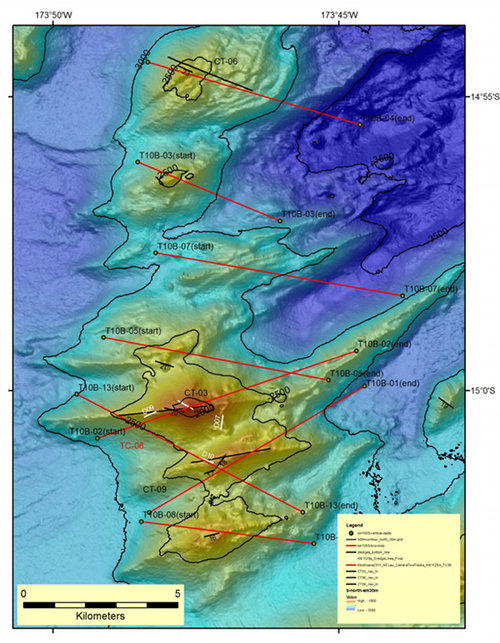The Quest 4000 made it first dive on one of the small volcanoes in the northern Matas which are named consecutively from south to north by their Tongan “number” name, i.e., Mata Taha (one), Mata Ua (two), and so on. Today’s dive was at Mata Ua Volcano and was the deepest dive of the expedition so far. Mata Ua has never been explored by an ROV before, but a survey two years ago found an intense hydrothermal plume just below the summit. The purpose of today’s dive was to try to find that hydrothermal vent site. Elongated pillow lava, rocks and the cloudy water of the plume transitioned to sediment with white deposits, which was evidence of recent hydrothermal flow. As we continued to search for active venting, the summit became so steep that at times the ROV was rising up a vertical wall.
As the ROV descended down slope to another search area, the water began to appear uniformly cloudier, indicating that we were returning to the depth interval of the plume. Towards the end of the dive, we started to get more indications of proximity to the vent source(s), including squat lobsters, polychaetes, eelpouts (deep-sea fish from the Family Zoarcidae) and a synaphobrachid eel (a deep-sea fish from the Family Synaphobrachidae). Small sponges and surpulid worms, typical of the type seen on the outskirts of vent systems, were also observed. Unfortunately, we ran out of time and had to end the dive before we found the source(s) of the venting. A scientist from within the ROV van remarked after one of the last observations of the organisms at the site, “If only they could tell us which way to go…”.
